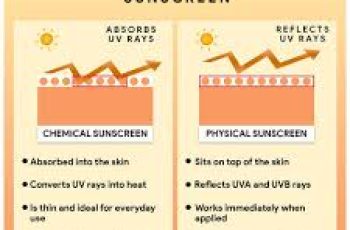
Can You Have Dermaplaning If You Use Retinol?
Dermaplaning has grown in popularity in recent years, but it isn’t necessarily a new beauty trend. Iconic holiday stars such as Marilyn Monroe used this technique for years as way of improving the longevity and overall look of her makeup. But it isn’t just the makeup benefits dermaplaning is adored for by those who have the treatment on a regular basis.
Now, if you’re sat here thinking, “What on earth is dermaplaning?” here is a little insight to what this popular treatment involves and the benefits you’ll see, let me explain it in a little more detail.
What is dermaplaning?
Dermaplaning is a treatment preformed with a specially designed blade to help remove the “peach fuzz” from the face. This not only removes any hair, but also provides a form of exfoliation that doesn’t involve any chemicals or acids. With the tiny hairs and layer of dead skin cells sloughed off the surface of the skin, you are left with glowing, healthy, and smoother looking complexion. You’ll also find that dermaplaning helps other skincare products to absorb quickly and more effectively into the skin.
With dermaplaning there is no down time required, unlike other facial treatments such as chemical peels. This makes dermaplaning the ideal at home treatment to perform before an event or on a semi-regular basis.
So, now you have a better understanding of the benefits of dermaplaning, let’s now investigate the question in today’s blog post, “Can you have dermaplaning is you use retinol?” stick around to get the answers and if you need a little reminder of how retinol works on the skin, check out our dedicated blog post.
Can I dermaplane if I use retinol?
Yes, you can, as long as you leave enough time in between dermaplaning and applying retinol to the skin. Ideally you want to leave 5 day to a week before and after dermaplaning before you reintroduce retinol back into your daily skincare routine. If you layer retinol on the skin after dermaplaning it will lead to the skin becoming irritated, dry with flaky patches of skin and redness. This is simply too much exfoliation for the skin with retinol increasing the speed of which skin cells rejuvenate it can strip away the sebum needed in the protective barrier. With the lack of sebum, the skin barrier will cause it to become weaker and more suspectable to skin damage due to exposure to free radicals and other environmental aggressors.
The easiest way to use both in your routine is to skip retinol the day before you plan to dermaplane this will ensure the skin maintains the correct levels of oil and water, whilst avoiding any unwanted irritation. You can then follow apply a serum enriched in hyaluronic acid or niacinamide to help lock moisture into the skin and keep it hydrated, plumped, and nourished.
How long after dermaplaning can you use retinol?
As I have mentioned already, it is important to leave enough time in between dermaplaning and retinol to avoid the skin becoming increasingly irritated with a lot of discomfort. For an ingredient as potent as retinol it is best to leave at least one week after dermaplaning, there are also several other aftercare steps to follow the treatment such as,
Avoid any form of exercise that results in sweating.
Do not go into saunas or steam rooms for 24 hours after.
Avoid exfoliating products, such as physical scrubs or chemical exfoliating toners that contain ingredients such as glycolic acid, salicylic acid, and lactic acid.
Avoid applying any form of makeup 24 hours after dermaplaning.
Do not have any form of facials for at least 2 weeks after the treatment.
Use gentle cleansing products and avoid using any form of muslin or flannel.
Ensure you apply hydrating ingredients such as hyaluronic acid to keep the skin hydrated and calm.
Avoid sun exposure for over 2 weeks after dermaplaning to prevent any sun damage.
There you have some examples of the aftercare you should follow after having a dermaplaning treatment. Don’t hesitate if you any concerns to seek the help from a doctor or dermatologist to ensure you won’t cause any unwanted irritation.
When should you not use dermaplaning?
There are some specific situations and skin types that should not use dermaplaning, such as.
People who are currently suffering from severe sunburn or have been on a sunbed shortly before having a dermaplaning treatment.
Those who have a sensitive skin type and are prone to sensitive skin conditions.
People who are currently experiencing a flare-up in severe breakouts or acne.
Those who have used prescription tretinoin or retinoid products in the last 3 weeks prior to the treatment.
Although dermaplaning is something that can be performed at home, however if you wanted my advice, I would opt for a professional treatment if you haven’t had it done before. This will avoid the skin from becoming too irritated and will help you get a better understanding of how to use the specialist blade at home once you have more confidence.
Can I use serums after dermaplaning?
Absolutely, just ensure they are packed with the best type of active ingredients to really nourish the skin. The best ingredients to use in serums after dermaplaning are.
Hyaluronic acid
Niacinamide
Vitamin E
Glycerin
Any of these will keep the skin moisturised and hydrated whilst combating any redness, irritation or slight itchiness that can occur sometimes after dermaplaning. It’s also important to remember to swap your everyday cleanser for one that has a gentle, non-foaming formula. Work your cleanser into your skin with your fingers and ensure you use tepid water to not flare-up any irritation. The final, and most important step is to always apply a daily SPF of 30 and above to keep the skin protected from sun exposure and potential skin damage.
There you have a little more information about dermaplaning and using retinol after the treatment. As I have mentioned already, if there are any concerns it’s best to consult with a dermatologist for peace of mind you are using this treatment correctly. Don’t forget to come and follow us on Instagram for more!


